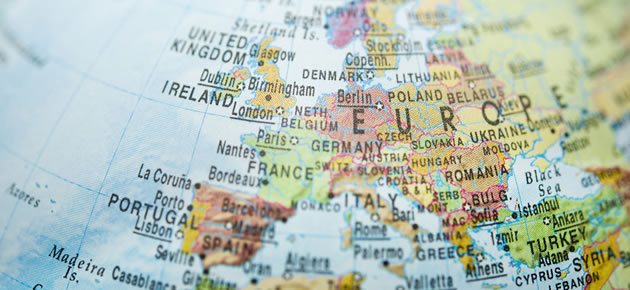After enjoying a largely bullish relationship with its peers all week the Australian Dollar softened on Friday and the Euro was able to advance.
Surprisingly strong Australian employment data lifted the South Pacific currency earlier in the week and it was trading at multi-month highs against both the Euro and US Dollar.
However, overnight declining Asian shares and yet more disappointing Chinese data saw the ‘Aussie’ lose some of its recent strength.
The New Zealand Dollar was also slightly softer, although both currencies are still poised to record five-day gains against several of their main rivals.
According to market strategist Imre Speizer; ‘The Aussie and Kiwi are lower mainly because the equity markets have fallen out of bed overnight. It’s a classic risk-aversion theme.’
Earlier this week the Australian Dollar shrugged off less-than-impressive Chinese trade figures, but with China’s inflation report also causing concern the appeal of the ‘Aussie’ was dented slightly.
China’s consumer price index was up 2.4 per cent in March year on year, in line with economists’ expectations.
The nation’s producer price index showed an annual decline of 2.3 per cent in March.
Chinese inflation remains below the government’s target level, increasing the odds of additional growth-boosting measures being introduced.
Bloomberg News quoted one Beijing-based economist as stating; ‘Inflation remains very low in China and growth is still the concern. The pressure on the central bank to loosen monetary policy will grow.’
Meanwhile the Euro was little-changed as data confirmed that EU harmonised German inflation fell below 1 per cent in March.
EU harmonised prices climbed by 0.3 per cent in March month-on-month but were up just 0.9 per cent in the year.
This was the first time German harmonised inflation had fallen below 1 per cent for nearly four years.
On a non-harmonised basis the German consumer price index was up 0.3 per cent on the month and 1.0 per cent on the year.
The results matched previous estimates and add to the case for the European Central Bank introducing additional stimulus to ease deflation concerns.
As the European session got underway the Euro was also trading higher against the Pound and US Dollar.
With economic data thin on the ground in the hours ahead the EUR/AUD pairing may trade in a fairly narrow range.
Next week the most influential Australian data to be aware of includes the publication of minutes from the latest Reserve Bank of Australia policy meeting, Australia’s Wespac Leading Index and Australia’s business confidence figures.
Euro to AUD movement could also occur in response to Eurozone industrial production figures, the German ZEW economic sentiment survey and Eurozone inflation data.
Euro (EUR) Exchange Rates
[table width=”100%” colwidth=”50|50|50|50|50″ colalign=”left|left|left|left|left”]
Currency, ,Currency,Rate ,
Euro, ,US Dollar,1.3896,
,US Dollar,1.3896,
Euro, ,British Pound,0.8279,
,British Pound,0.8279,
Euro, ,Australian Dollar,1.4610,
,Australian Dollar,1.4610,
Euro, ,New Zealand Dollar,1.6040,
,New Zealand Dollar,1.6040,
Euro, ,Canadian Dollar,1.5188,
,Canadian Dollar,1.5188,
[/table]



